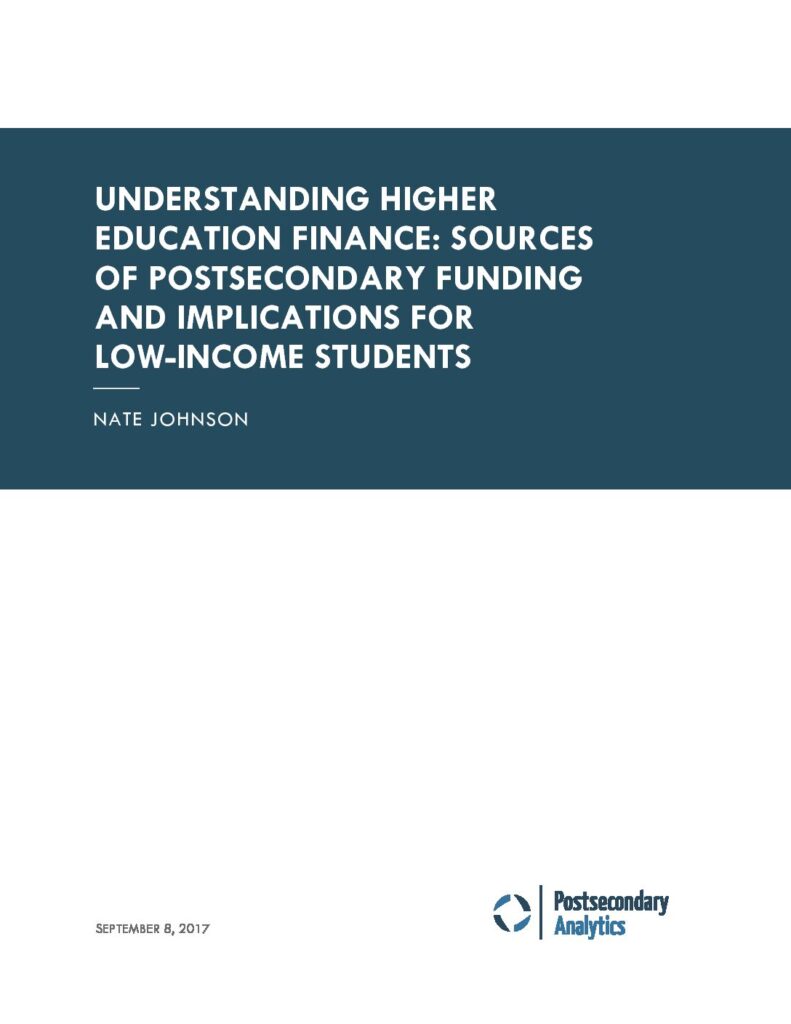Every year, the United States invests more than $800 billion in postsecondary education, if the budgets of postsecondary institutions and students and the cost of federal and state tax credits are all included. Yet the total extent of the investment is rarely discussed. This report, produced with support from the Bill & Melinda Gates Foundation, covers the full range of funding sources our postsecondary system depends upon, from state appropriations to institutions to support students receive from parents, to state and federal tax expenditures.
The report looks at finance through the lens of low-income student success in particular , and points out how most of postsecondary education’s revenue is driven by other, competing priorities. The result is a set of incentives and a competitive economic environment that makes it difficult for low-income students and the institutions that serve them to thrive. It concludes with implications for policymakers and institution leaders at all levels and a discussion of how different types of postsecondary reform align with potential sources of revenue.
In addition to the brief, the project includes:
- excerpts from Nate Johnson’s interviews with a variety of experts on postsecondary finance,
- an opinionated guide to primary data sources for postsecondary finance and
- a resource bibliography by project manager Gail Coppage.
Get Updates or Provide Feedback
We want to know what you think. If you would like to receive updates as materials on Understanding Higher Education Finance are added or revised, or if you would like to provide feedback, please use this form.
Understanding Higher Education Finance Project Team
Principal Consultant: Nate Johnson
Project Manager: Gail Coppage
Editorial and design assistance: Strategies 360
Website design: Aaron Fernandes

